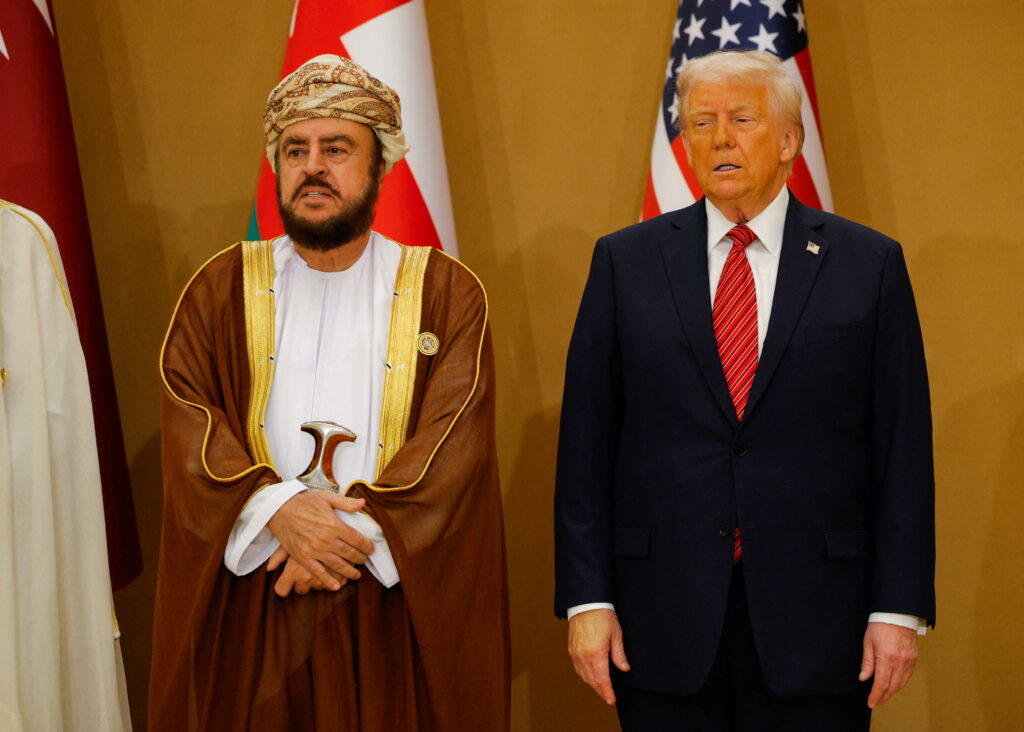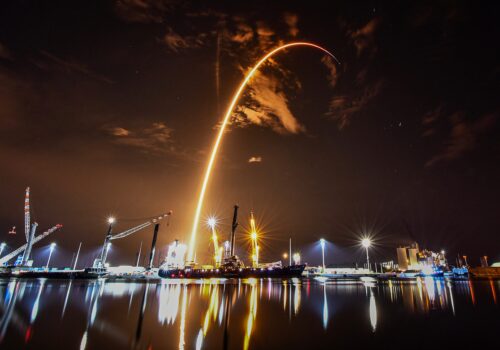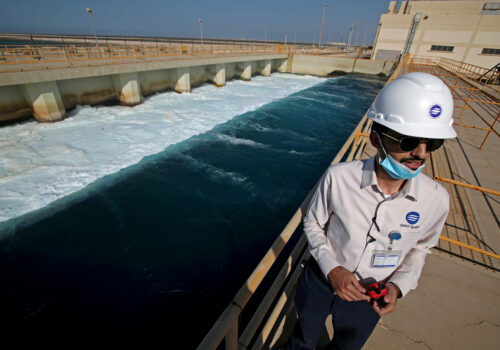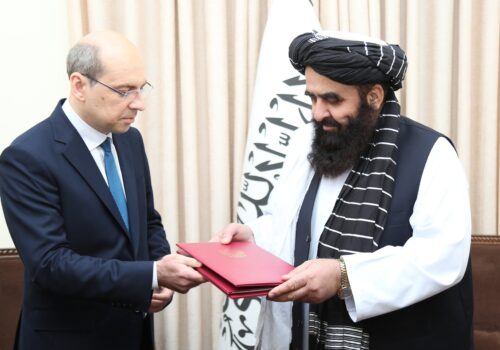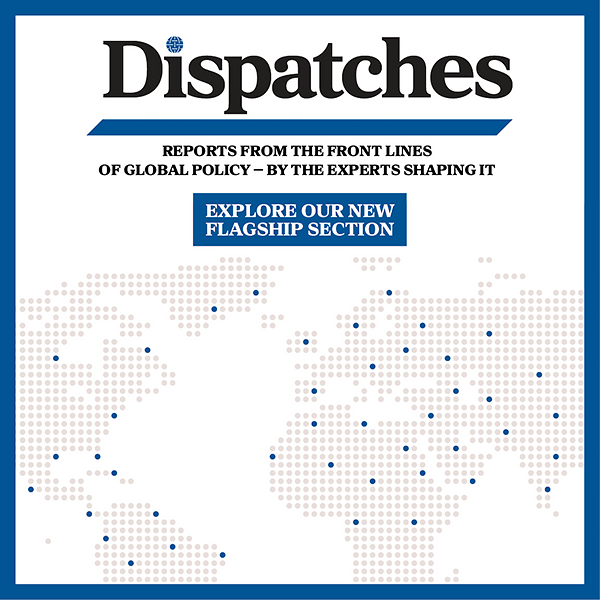Much fanfare surrounded US President Donald Trump’s May visit to the Gulf monarchies, Saudi Arabia, Qatar, and the United Arab Emirates. Absent from the list of visited countries, among others, was the Sultanate of Oman, which nevertheless remains a strategic partner for the United States. While US trade volume with Oman remains far smaller than, for example, with the United Arab Emirates, long-term economic and geopolitical trends favor increased US business, as well as defense and energy investments.
With major logistics hubs such as the Port of Duqm increasing in prominence, and as one of only four regional countries that enjoy a Free Trade Agreement with Washington, Oman is primed to reap the benefits of a global trade realignment and can position itself as a reliable US partner in a region still fighting the threat of terrorism, managing great power rivalry, and mitigating Iran’s destabilizing behavior.
When compared to some of its neighbors, Oman has significantly less oil and natural gas reserves, and has historically favored a more balanced foreign policy rather than basing large numbers of US troops there as in neighboring Qatar and Bahrain. While Oman continues to adeptly navigate regional multipolarity with an independent foreign policy, Oman nevertheless remains largely aligned with US defense and security initiatives in the region. Combined military exercises, such as Khunjar Hadd, last held in 2023, and Oman’s participation in the Combined Maritime Forces, ensure interoperability between the US and Omani forces, providing key naval capabilities to counter piracy and aggression in the strategic Strait of Hormuz.
Oman has also been a steadfast member of the Global Coalition to Defeat ISIS, played an important role as host in US nuclear negotiations with Iran, and successfully negotiated a ceasefire between the United States and the Houthis in May of 2025. Notably, the 2019 Framework Agreement allowed for expanded US access to the ports of Duqm and Salalah, providing the United States Navy with facilities to refit and repair warships in a strategically important part of the world and underscores Oman’s role as a prime logistics hub for its allies and partners.
In addition to serving as a critical naval facility for the United States, the Port of Duqm is playing an increasingly important role in Oman’s growing economic heft and efforts surrounding Oman Vision 2040. The recent investment announcement of $550 million into the Port of Duqm by Bahrain-based Investcorp, which will focus on port expansion and the addition of maritime infrastructure, highlights the increasing importance of the port not just for military partnerships but also for economic development opportunities.
The investment also enables the construction of an industrial plant that will produce low-carbon iron metallics and hydrogen-powered steel, aligning with Oman Vision 2040 to produce green steel and sustainable infrastructure development. This investment announcement is in addition to the World Bank’s support, which, since 2019, has mobilized $1.2 billion through the Multilateral Investment Guarantee Agency into the Port of Duqm Special Economic Zone. Additionally, Oman is advancing its pursuit of green hydrogen as part of Oman Vision 2040, with five of the ten largest upcoming low-carbon hydrogen plants in the Middle East planned to be operational by 2030, providing additional energy solutions for potential increases in economic activity.
Given these significant investments, Oman’s push to diversify its economy, its strategic location, and the free trade agreement with the United States, the small Gulf country is fortuitously positioned to greatly increase its economic and diplomatic role in the region. The investment climate for foreign firms in Oman continues to improve as well, with the recent passage of the Foreign Capital Investment Law, which allows 100 percent foreign ownership in most sectors and removes previously mandated minimum capital requirements. This change provides similar opportunities as the US free trade agreement which already allows US firms to establish and fully own a business in Oman without a local partner, giving maximum flexibility to companies and investors seeking to take advantage of Oman’s growing market, especially firms in the energy and minerals space, in line with the goals of Oman Vision 2040 these opportunities also come as US venture investment into frontier tech firms is up 47 percent year over year. The Trump administration is moving to promote deregulation and US leadership across the defense, energy, and technology sectors.
This alignment of incentives creates significant opportunities for Oman, which finds itself at a historic crossroad of trade, economic, tech, and geopolitical importance, given massive investments in artificial intelligence and renewable energy by sovereign wealth funds, in a region that remains integral to global markets and stability, and for US companies who wish to do business there.
Moreover, Oman’s continuing market reforms will drive additional economic interest from firms around the globe, such as those already investing in Saudi Arabia or the UAE, given market-friendly reforms and deepening capital markets. Private equity giants, such as BlackRock, have established a presence in the UAE, underscoring the interest in the region, particularly in countries where market access is favorable. US companies would do well to build on existing economic relationships, trust built over decades of security and diplomatic cooperation, and an increasingly favorable business environment to take advantage of Oman’s rising stature in the region. Additionally, US climate tech firms that may find a less favorable investment landscape in the United States might do well to realize investment and growth opportunities in Oman, given the focus on renewable energy, while advanced manufacturing, energy, or logistics companies seeking a way into the markets of the Arabian Gulf may find that the Duqm Port expansion provides fertile ground for investment.
Finally, defense co-production agreements with Oman, similar to Lockheed Martin’s collaboration with the General Authority for Military Industries in Saudi Arabia, could spur both economic windfalls for US defense tech companies while providing both the United States and Oman with defense articles closer to the point of need in what remains a complicated security environment.
While economic uncertainty is gripping many countries around the world, Oman has remained a steadfast defense and economic partner of the United States. Through an increasingly favorable business environment, strategic location, and desire to court additional international investment, Oman is positioned to become a key player in shaping the future of the Arabian Gulf. For American firms and policymakers, the question is no longer whether Oman will play a bigger role—it’s whether the United States will seize the opportunity before others do.
Nic Adams is a nonresident senior fellow with the Scowcroft Middle East Security Initiative at the Atlantic Council’s Middle East Programs.
Further reading
Mon, Aug 4, 2025
What could NATO’s commercial space strategy mean for the Gulf?
MENASource By Manal Fatima
The United States is well positioned to help extend NATO’s emerging commercial space ecosystem to the Gulf.
Thu, Jul 17, 2025
Facing scarcity, the Gulf’s ‘smart water’ future lies in desalination
MENASource By Hany Ghanem
Desalination-enhanced regenerative data centers can help tackle the challenges of limited water resources and the post-oil economic shift.
Fri, Aug 1, 2025
Where does the Gulf stand on Russia’s recognition of the Taliban?
MENASource By
While maintaining close ties with the West, the GCC has increasingly strengthened its ties with Russia and China.
Image: U.S. President Donald Trump and Deputy Prime Minister of Oman, Asa'ad bin Tariq, stand as they attend a GCC summit in Riyadh, Saudi Arabia, May 14, 2025. REUTERS/Brian Snyder
